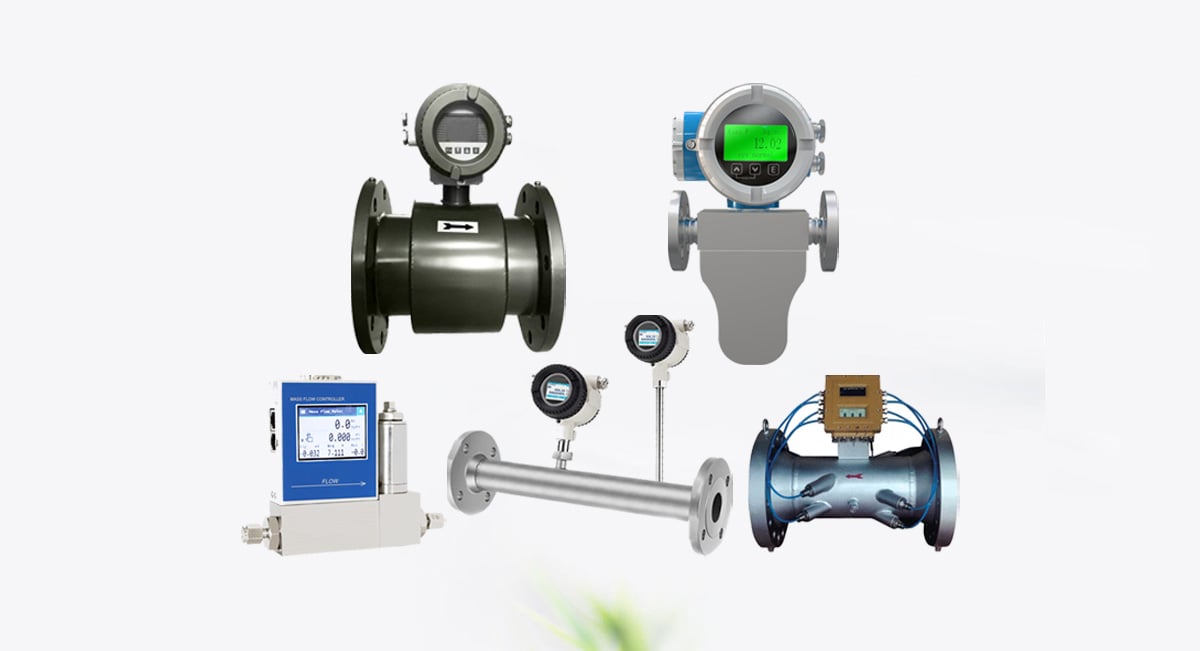When it comes to the flow measurement, two fundamental concepts often come into play: mass flow rate and volumetric flow rate. These terms are crucial in various industries, including oil and gas, chemical processing, water treatment, and HVAC (heating, ventilation, and air conditioning) systems. Understanding these concepts and knowing how to convert between them is essential for professionals working with fluid systems.
Table of Contents
Related Posts
- Top 9 Flow Meter Types: Their Working Principles, Advantages and disadvantages
- 4 Types of Flow Meters
What’s mass flow rate?
Mass flow rate refers to the amount of mass passing through a given point in a system per unit of time. It is a crucial parameter in many industrial processes, especially those involving the transfer of gases, liquids, or particulate solids. The mass flow rate is typically expressed in units such as kilograms per second (kg/s), grams per minute (g/min), or pounds per hour (lb/h).
The Formula for Mass Flow Rate
The mass flow rate can be calculated using the following formula:

Importance of Mass Flow Rate
Mass flow rate is crucial in applications where the mass of the substance is more important than its volume. For example:
- Chemical Reactions: In chemical processes, reactions are typically based on mass rather than volume.
- Combustion Systems: The mass of fuel consumed determines the energy output in combustion systems.
- Quality Control: In industries like food processing, ensuring the correct mass of ingredients is vital for product consistency.
Understanding and controlling mass flow rate helps ensure efficiency, safety, and product quality in various industrial processes.
What is Volumetric Flow Rate?
Volumetric flow rate refers to the volume of fluid passing through a given point in a system per unit of time. This measurement is essential in applications where the volume of fluid is a critical factor, such as in water distribution systems, HVAC systems, and fuel transfer processes. The volumetric flow rate is typically expressed in units such as cubic meters per second (m³/s), liters per minute (L/min), or gallons per hour (GPH).
The Formula for Volumetric Flow Rate
The volumetric flow rate can be calculated using the following formula:

Importance of Volumetric Flow Rate
Volumetric flow rate is particularly important in scenarios where the volume of fluid needs to be controlled or measured.
For example:
Water Treatment: In water treatment plants, maintaining the correct volumetric flow rate ensures proper filtration and chemical dosing.
Irrigation Systems: In agriculture, volumetric flow rate helps manage water distribution efficiently.
HVAC Systems: Ensuring the correct volumetric flow rate of air in HVAC systems is crucial for maintaining indoor air quality and comfort.
Controlling the volumetric flow rate is essential for optimizing the performance and efficiency of fluid systems in various industries.
Differences between mass flow rate and volume flow rate
Controlling the volumetric flow rate is essential for optimizing the performance and efficiency of fluid systems in various industries.
1. Measurement Focus
- Mass Flow Rate: Measures the mass of fluid passing through a point per unit time.
- Volumetric Flow Rate: Measures the volume of fluid passing through a point per unit time.
2. Units
- Mass Flow Rate: Commonly expressed in kilograms per second (kg/s), grams per minute (g/min), or pounds per hour (lb/h).
- Volumetric Flow Rate: Commonly expressed in cubic meters per second (m³/s), liters per minute (L/min), or gallons per hour (GPH).
3. Dependence on Fluid Density
- Mass Flow Rate: Depends directly on the fluid’s density. For a given volumetric flow rate, a denser fluid will have a higher mass flow rate.
- Volumetric Flow Rate: Independent of fluid density. It only depends on the fluid’s velocity and the cross-sectional area of the flow.
4. Applications
- Mass Flow Rate: Crucial in processes where the mass of a substance needs to be precisely controlled or measured, such as in chemical reactions, fuel consumption, and quality control.
- Volumetric Flow Rate: Important in applications where fluid volume is the primary concern, such as in water distribution, HVAC systems, and irrigation.
Mass flow meters and Volumetric flow meters
Mass flow meter examples:
- Coriolis flow meters
- Thermal mass flow meters
Volumetric flow meter examples:
- Magnetic flow meters
- Vortex flowmeter
- Turbine flow meters
- Orifice meters
- Venturi meters
- Ultrasonic flow meters
How to convert volumetric flow rate to mass flow rate?
To calculate mass flow rate, divide the change in mass with the change in time: dm/dt = (m_2 – m_1) = (t_2 – t_1).
If the volumetric flow rate was given, the mass flow can be found by multiplying the density of the fluid with the volumetric flow rate: Q * density.









Leave a comment